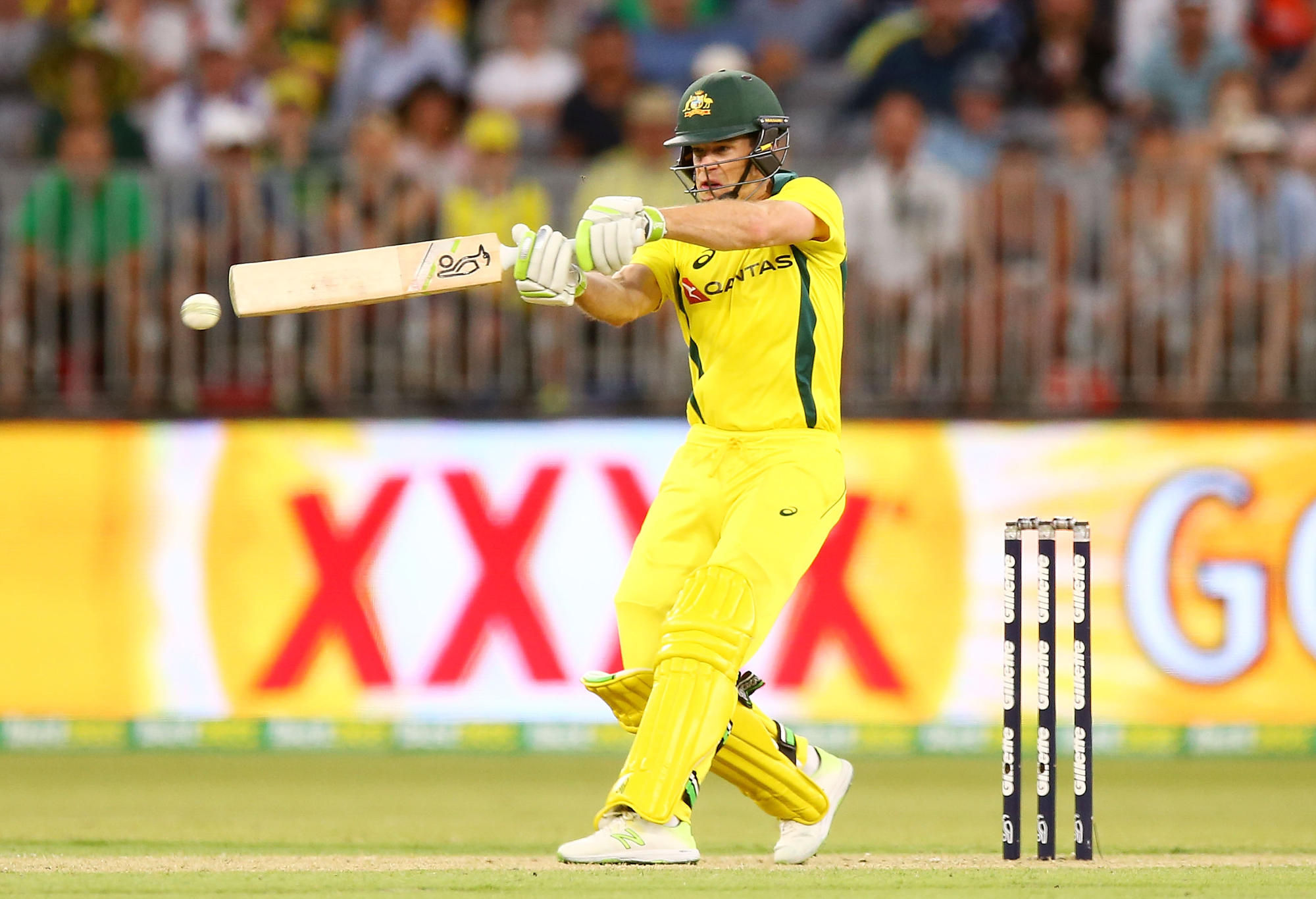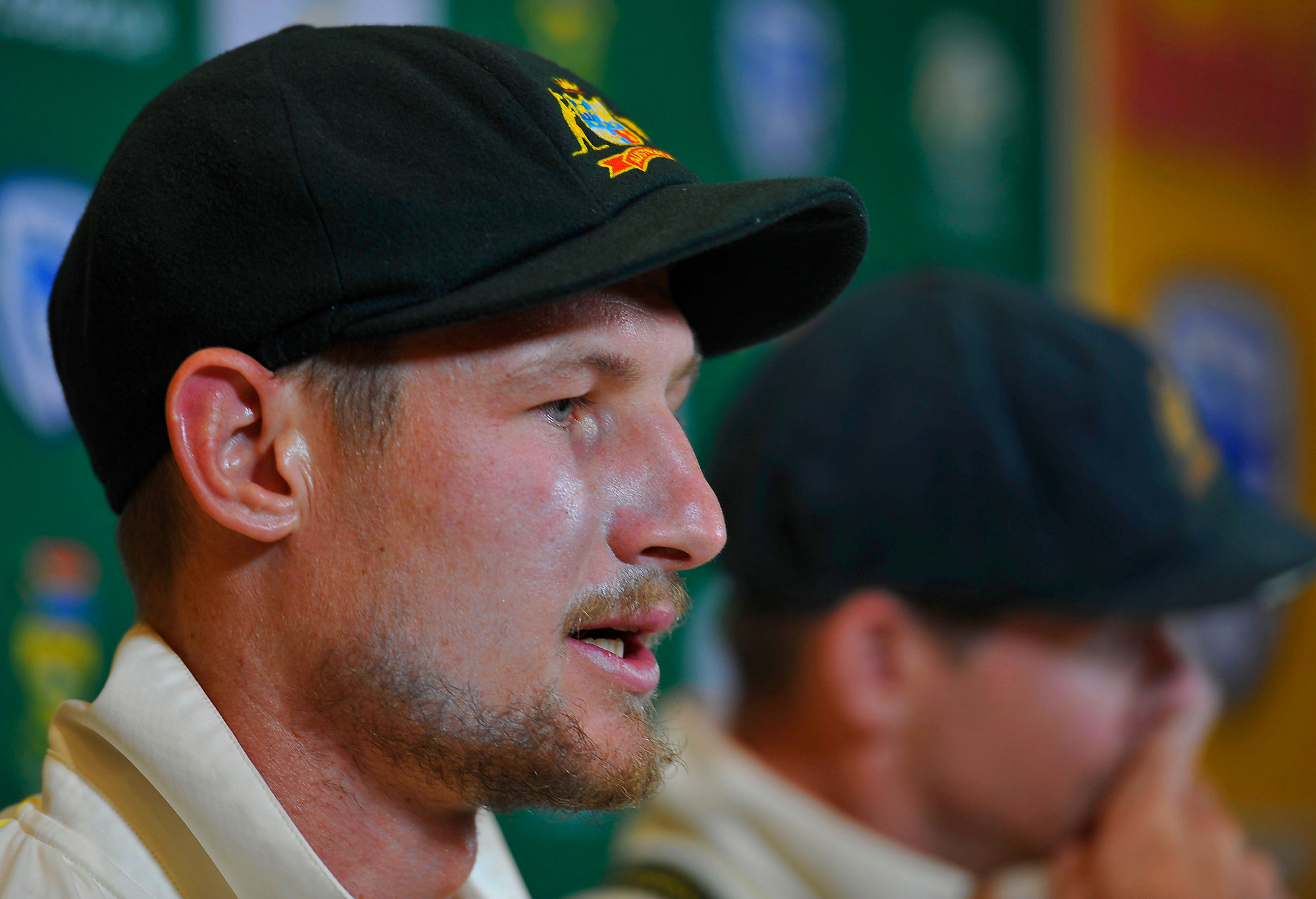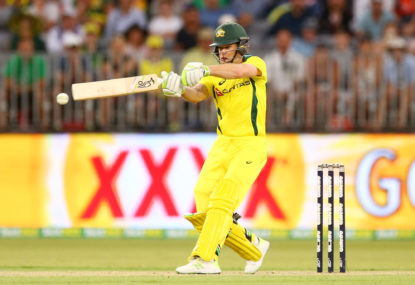Tim Paine is not suited for ODI cricket and must immediately be replaced as both wicketkeeper and Australian captain.
The Tasmanian has done an outstanding job behind the stumps in Test cricket since returning last summer but has always shaped as the wrong choice to keep for Australia in 50-over cricket.
Paine lacks the power game to have an impact with the bat at number seven in ODIs, and this has deepened what was already Australia’s biggest problem – their shaky middle order.
Since returning to the Australian ODI team in January, Paine has played 11 matches, including two tour games in England which netted a return of 164 runs at an average of 18.
The biggest concern, though, is his dawdling strike rate of 82 in that time. That strike rate translates to a run rate of 4.92 runs per over, the kind of figure which would have been acceptable from a number seven 20 years ago but which is miles below par in this era of 350-plus team totals.
By comparison, his opposite number in this series, England’s Jos Buttler, has a career strike rate of 117.
Obviously, Australia have no keeper-batsmen anywhere near the equal of Buttler who is now arguably the second-most valuable ODI cricketer in the world after Indian captain Virat Kohli.
But Australia cannot afford to carry a keeper in Paine who is more of a hindrance than a help with the bat.

(Photo by Mark Nolan/Getty Images)
With Australia having only 16 more scheduled ODIs before the start of next year’s World Cup, they cannot waste time, they must immediately replace Paine.
As I wrote prior to this ODI series, which Australia lost 5-0, the only way I could see Australia getting value out of Paine’s batting would be to elevate him to opener and ask him to attack the new ball like it’s a T20.
But even that idea has little merit now that Aaron Finch, Travis Head and Shaun Marsh have locked down their spots in the top three.
Finch is Australia’s most accomplished ODI batsman, Marsh was their standout player in this series, and Head has a fantastic record as an ODI opener – 484 runs at 48, with a strike rate of 98.
That leaves nowhere for Paine to bat except down at six or seven, where he patently lacks the necessary dynamism.
Fortunately for Australia, they have the perfect candidate to replace Paine as ODI skipper in opener Finch.
The Victorian has captaincy experience at State level and has also led Australia in both ODIs and T20s. As one of the first players picked in the ODI team he would add stability.
The question of who should replace Paine as ODI keeper is less clear. I’ve written previously that I believe the best option is Peter Handscomb, who has a dominant record as a keeper in one day cricket, with 904 runs at 50.
From a batting point of view, the next best candidate after Handscomb would be Cameron Bancroft who had a fantastic JLT Cup last summer, keeping neatly and hammering 265 runs at 53, with a strike rate of 104.
But Bancroft is banned for nine months due to the ball-tampering scandal.

(Photo by Ashley Vlotman/Gallo Images/Getty Images)
That leaves Handscomb and South Australian Alex Carey as the obvious frontrunners to replace Paine. As much as I would like to see Handscomb given that opportunity, it is clear Carey is next in line as far as the selectors are concerned.
I have had misgivings about Carey’s suitability in ODIs. He will very likely need to bat at seven, and often be tasked with clattering boundaries with five men out on the rope in the final 20 overs of the innings.
It remains to be seen whether Carey has the ability to adapt to this challenge – given that in State cricket he plays as a slow-scoring opening batsman, with a crawling strike rate of 73.
There is a massive difference between knocking a hard, new ball into the many gaps available during the Power Play and muscling boundaries when the field is set deep and the ball is soft. However, there have been some encouraging signs from Carey in his three-match ODI career to date.
He has twice played the kind of sprightly cameo that is handy from a number seven – 27 from 24 balls on debut against England in January, and 44 from 40 balls against England on Sunday.
Carey looked fluent against spin in both of those knocks, which is crucial given the way many teams looking to strangle Australia with spin in ODIs.
By comparison, in Paine’s 35 career ODIs, he has never once made 15 or more while scoring at a strike rate of 100 or better.
That is a damning statistic and one which should end Paine’s ODI career.































































































